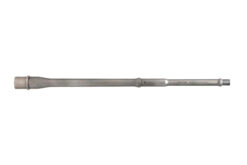On-Sale
Save 50%
MSRP: $9.95
Original price was: $6.95.$4.95Current price is: $4.95.
On-Sale
Save 32%
MSRP: $43.95
Original price was: $37.95.$29.95Current price is: $29.95.
On-Sale
Save 50%
MSRP: $39.99
Original price was: $29.95.$19.95Current price is: $19.95.
On-Sale
Save 50%
MSRP: $79.95
Original price was: $52.95.$39.95Current price is: $39.95.
On-Sale
Save 35%
MSRP: $19.95
Original price was: $16.95.$12.95Current price is: $12.95.
On-Sale
Save 33%
MSRP: $14.95
Original price was: $13.95.$9.95Current price is: $9.95.
On-Sale
Save 14%
MSRP: $29.00
Original price was: $29.00.$24.95Current price is: $24.95.
On-Sale
Save 39%
MSRP: $89.97
Original price was: $79.97.$54.95Current price is: $54.95.
On-Sale
Save 38%
MSRP: $129.99
Original price was: $107.95.$79.95Current price is: $79.95.
On-Sale
Primary Arms SLx 1-6x24mm SFP Rifle Scope Gen IV – Illuminated ACSS Nova Fiber Wire Reticle
Primary Arms
Save 33%
MSRP: $399.99
Original price was: $349.99.$269.95Current price is: $269.95.
On-Sale
Save 47%
MSRP: $189.99
Original price was: $167.99.$99.95Current price is: $99.95.
On-Sale
Save 38%
MSRP: $159.99
Original price was: $149.99.$99.95Current price is: $99.95.
On-Sale
Save 25%
MSRP: $23.95
Original price was: $19.95.$17.95Current price is: $17.95.
On-Sale
Save 27%
MSRP: $15.00
Original price was: $13.00.$10.95Current price is: $10.95.
On-Sale
Save 52%
MSRP: $209.99
Original price was: $159.95.$99.95Current price is: $99.95.
On-Sale
Original price was: $15.99.$11.95Current price is: $11.95.
On-Sale
Save 26%
MSRP: $34.99
Original price was: $34.99.$25.95Current price is: $25.95.
On-Sale
Save 28%
MSRP: $39.00
Original price was: $39.00.$27.95Current price is: $27.95.
On-Sale
Save 35%
MSRP: $169.99
Original price was: $169.99.$109.95Current price is: $109.95.
On-Sale
Save 28%
MSRP: $24.95
Original price was: $20.95.$17.95Current price is: $17.95.
On-Sale
Save 10 – 38%
MSRP: $139.95 – $179.95
Price range: $99.95 through $161.95



























